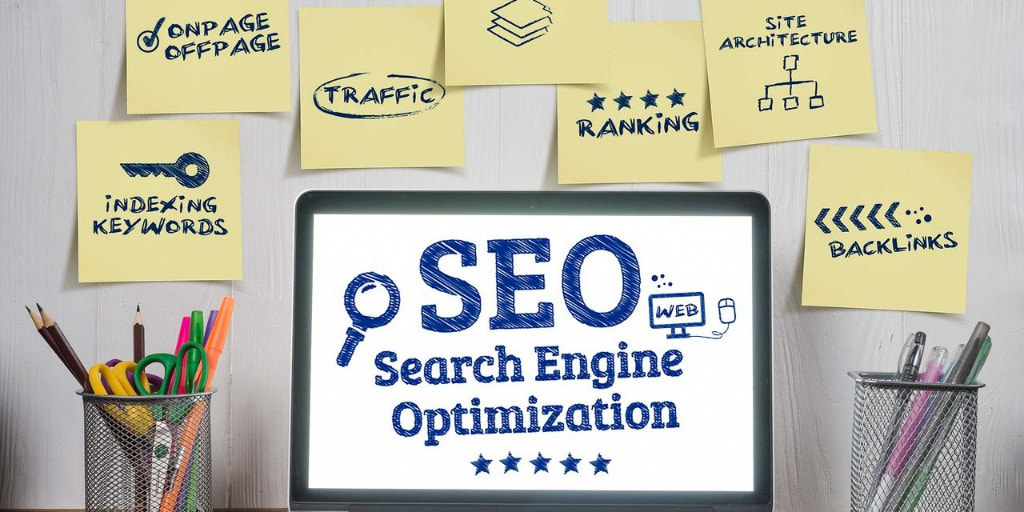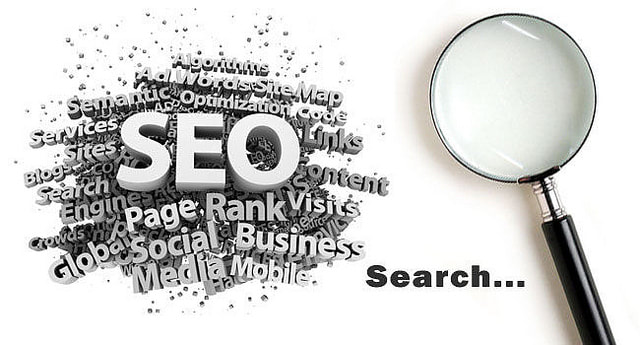5 Tips for Local SEO1. How often should I be posting to GMB? At a minimum, you should be posting on Google My Business once every 7 days. Many businesses post once per day, and have seen good results and improved rankings. Google tends to look favorably on businesses that use Google products frequently. 2. How long do GMB posts last? Posts do expire after one week, so you'll need to keep updating them. Google has confirmed that most Google Posts are removed seven days after they are first published. 3. Does posting on Google My Business Help SEO? Yes! Google my business posts are a great way to improve your overall SEO strategy. By posting to Google it can help you generate more organic clicks. Google posts come with CTA buttons which will encourage users to take action off the post. These organic clicks on the buttons, in return, will build up your page rankings. 4. How do you know if you need local SEO? Any business with a physical brick & mortar location OR that serves customers in a particular geographic area needs Local SEO. Select 3 of your important keyword phrases (the things that customers would type in looking for a business like yours) and type them into Google. If you're not listed on the first page of Google's results, give us a call or click here for details on our SEO local packages! 5. How much does local SEO cost? Local SEO pricing can range from $75 to $5,000 per month, according to our own observations of our industry. A study of SEO pricing by Moz found the majority of agencies charge a monthly retainer between $1,500 and $5,000. Get more details on our local SEO and check out our MUCH LOWER rates here! Search Engine Optimization + GMB = More Leads & Sales!Search Engine Optimization | SEO
0 Comments
Online marketing is the hottest thing in the business world today. According to statistics, a majority of clients rely on search engines such as Google to find goods and services within their localities and beyond. As such, it is almost mandatory today for every business owner or manager to have a business website in place. However, having a site is one thing and attracting online traffic is another.
To maximally benefit from online marketing, you must ensure that your company’s website is among those appearing on the first pages of prominent search engines whenever potential clients search for particular keywords. To achieve this, you will need a boost from several Search Engine Optimization (SEO) tools. Here are five of the most effective tools that will help you get a top SEO ranking and a subsequent substantial online traffic. Google PageSpeed Insights Among the SEO practices that determine the ranking of a website is its usability and speed. The Google PageSpeed Insights tool helps you to know how usable your company website is on a variety of devices like desktops and smartphones. Most importantly, the tool checks the loading time for your URL and advice you on the areas to improve on. Google Trends How you phrase keywords on your company website and blogs go a long way in determining how much traffic comes your way. Going by the general SEO practices, the value of a keyword changes with seasons and localities. Google Trends helps you to know which search terms are trending at a given time and which ones are popular in particular regions. DeepCrawl The content you write on your company website and blogs may at times be a hindrance to the success of the site on different search engines. DeepCrawl scrutinizes information on the site and points out the various technicality problems that you may need to iron out to push your website up the rank. QuickSprout Website Analyzer This is a tool that comprehensively analyzes and give solutions to nearly each of the common SEO practices. The tool will tell you which links are mostly associated with your company website, what your competitors are doing, and the tags to make in your content. Responsive Design Test This tool will help you know how your company website appears on different devices. The tool will help you have sharp websites both on computers and phones, consequently raising your SEO ranking. There are numerous tools out there that can significantly impact your company’s SEO ranking. However, the few discussed in this article are good for a start.
Contact Crawford Designs today, to learn more about ranking higher on Google, Yahoo, and Bing.
In writing this post, I wondered about the spelling of 'Optimize'. I often see it spelled with both an s and a z. According to the research, "OptimiZe" is the American spelling, and "optimiSe" is British spelling (also Canadian). The academically correct version depends on who your audience is. So, that was the first tip... on to the actual SEO tips of the day:
Here's a lesser known attribute of JPG (.jpeg) images that can help with optimizing your site. Right click any jpg image and choose properties... then click the details TAB. Use the site name or article heading as the Title. Place your H1 Heading or tag line in the Subject field. For Ratings always 5 stars. Keywords in Tags and paste your entire article into the Comments field. You now have perfectly optimized images for Google to find and they will often show up in the "Images For (search term)" in organic search. Not only that but will be matched to the article, as well, if the keywords are not those that people pay lots of money for in Adwords. Even so your article can still show up on page one with enough backlinks.
We can help! Contact us today for a FREE consultation. We will explain more about websites, blogs, and email newsletters, and what they can do for your business. See how the world searched with Google's 2012 Zeitgeist (influences of a particular period in time).
Every day I get the question, "How can I get found on search engines" or "What can I do to improve my seo results?" When you type in this question on Google search, you get over 9 MILLION results (most of which offer "guaranteed top of page one" for a mere $1,000/month!) I wish I had that secret formula, but the answer is not that simple. Now, Google has introduced 'Search plus your World', and now search results get even better by including photos, posts, and more from you and your friends. When signed in with Google+, you’ll find personal results and profiles of people you know or follow. You can even expand your world by discovering people related to your search. Here is a great explanation of the difference in search results (whether you are logged into Google+ or not) by Lee Odden, CEO of @TopRank: Logged out – Google search results when you or other users are not logged in are as close to “generic” as you’ll get, but they are still customized according to your geographic location and your click activity during the session. The days of generic search results that can be predictably viewed by more than one person in different locations is gone. If you do search while logged out, you’ll get a more generic experience than logged in – so it’s worth noting the difference. Logged in – Users of Google services who are logged in while searching will almost certainly be presented with unique search results. Personalization can be influenced by a variety of factors, including the recent social signals integration of Google+ into Google search results – aka Google Search Plus Your World and especially from the universal Google product data sharing that will start March 1st 2012. Other influences include past search history, geographic location and your interaction with search results are factors for Google to adjust search results just for you. Keep in mind, logged in or out, there are over 20o signals used to sort search results. Take a look at the video below, to learn more about the new way that search results work: Ask yourself these questions:
You've been in business a long time and you've had a lot of press releases written over the years. So you know what it takes to capture the attention of the press and get your business in the limelight. But what if you're making your move online and you want to publish press releases on your website or distribute them to press agencies over the Internet. Should they be re-written?
This is a tricky question because in the end a press release is a press release. It serves one purpose. You are trying to win the attention of news editors in order to get them to write a story about you. Is there a different strategy for online press releases? Yes and no. You'd write the press release for online distribution pretty much the same way you'd write it for off line distribution except for one big difference. It's called SEO. Search engine optimization. Your press release will get a lot more attention if it is written as much for the search engine audience as it is for the news audience. That means you want it to rank well for specific key phrases that people (news professionals) will search for. Also, you must realize that your press releases published online have the potential to be read by members of the general public so you really have three audiences: 1) Search engines; 2) News professionals; 3) The general public. As long as you address the needs of your three audiences, your press releases will do their jobs well. |
Archives
June 2024
Categories
All
|
Website Design Gettysburg | Services | Website Designer Near Me | Prices | Contact Gettysburg Website Design | Design Blog
From Our Blog
3 Steps to Improve Your Google Business Listing Ranking • Search Engine Optimization + GMB = More Leads & Sales! • Website SEO Checklist
Secrets To Building an Appealing Website For Any Niche
Secrets To Building an Appealing Website For Any Niche
|
Crawford Designs, LLC
Gettysburg Website Design |
© 2021 Gettysburg Website Design.
717-855-3184 |
SERVICES: Website Design, Local Gettysburg Website Design Services, Website Design Company, Website Development Company, Freelance Web Designer, Web Design Company, Web Development Company, Business Websites, Corporate Websites, Business Marketing and Advertising. Website Maker, Web Site Creator, Web Builder, Done For You Websites, Hire a Website Designer, How to Get a Business Website, best website design companies for small business, website design pa, website for small business owners, web design and marketing company, top website design company, york county web design, local web design companies near me, small business web design near me, web design westminster md, web designers in hanover pa, small design companies






 RSS Feed
RSS Feed

